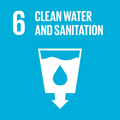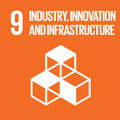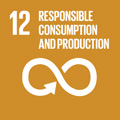- Docente: Serena Bandini
- Credits: 6
- SSD: ING-IND/24
- Language: Italian
- Teaching Mode: In-person learning (entirely or partially)
- Campus: Bologna
-
Corso:
Second cycle degree programme (LM) in
Environmental Engineering (cod. 8894)
Also valid for Second cycle degree programme (LM) in Chemical and Process Engineering (cod. 8896)
-
from Sep 17, 2024 to Dec 12, 2024
Learning outcomes
Basic elements of membrane separation technologies and applications. The course is mainly addressed to membranes and membrane processes with focus on process industry and environmental engineering.
Course contents
Requirements
The course addresses to master students on environmental engineering and/or on chemical engineering. It gives a synthetic overview of membrane science and membrane engineering, with emphasis on process development, on applications as well as on the basic concepts of equipment design.
A prior knowledge and understanding of basic concepts of process engineering and transport phenomena, particularly of mass transfer, is required to attend with profit this course. In addition, students should master a general knowledge of systems, problems and applications of conventional separation processes.
Fluent spoken and written Italian is a necessary pre-requisite: all lectures and tutorials, and main part of study material will be in Italian.
Contents:
UNIT 1. Introduction on membrane technology
Separation processes in process industry and in environmental application: basic features and relevance. Fundamentals of membrane technologies. Basic definitions. Membranes and membrane processes classification. Preliminary description of membrane processes for liquid and gas phases.
UNIT 2. Membranes and modules
Description of the main polymeric and ceramic membranes and of the manufacture techniques (in brief). Membrane geometries. Parameters and techniques for membrane characterization (cutoff, rejection, permeability, permeance, breakthrough pressure, bubble pressure, etc. )
Technical features of modules: tubular, spiral wound, hollow fibers, plate&frame. Fluidodynamic analysis and calculation procedures of mass transfer coefficients for different modules geometries. Technical sheets.
UNIT 3. Main membrane processes for liquid streams
Reverse Osmosis, Nanofiltration, Ultrafiltration, Microfiltration. Fields of application and conventional processes. Advantages and limitations. Transport phenomena and thermodynamics in membrane processes: osmotic pressure, hydraulic permeability, fenomenological (Spiegler-Kedem) and structural models (Mason&Lonsdale model, solution-diffusion model, porous vision) for RO and NF. The role of concentration polarization and gel-layer model; resistances models for MF and UF; the critical pressure in UF and MF. The role of operative conditions on process performances. Fouling: characteristics and solution strategies.
UNIT 4. Membrane systems and equipment.
Parameters. Plant configurations and modules arrangement: continuous, batch and semi-batch plants, tree configuration, stage arrangements, “feed& bleed” configuration, etc.
Basic design: data required, mass balances, degree of freedom analysis, plant specifications, minimum area calculation, operating point of a “feed&bleed” stage, stages numbers calculation.
Economics: main cost items of a plant (capital, operative, energy, maintenance, membranes replacement, etc. ) and process design quantities.
UNIT 5. Membranes and modules characterization. Examples.
Typical experimental data for UF, RO and NF. Calculations from data sheets. Design of RO desalting plants basing on free software packages: examples. Discussion about the design of UF plants in feed&bleed configuration. Diafiltration mode: discussion. Desalting plants and energy recovery (pressure exchanger). Examples of integrated and/or hybrid processes for wastewater treatment and/or stream fractionation.
UNIT 6. Membrane BioReactors(MBR) for wastewater treatment.
Submerged membranes and comparison with conventional techniques. Membranes and equipment; plant managements: fouling, back-flushing, cleaning procedures, etc. Examples.
UNIT 7. Gas separation “pressure-driven” membrane technologies
Basic principles and applications: gas separation and vapor permeation; membrane vs. conventional processes. Mass transfer modelling (solution-diffusion); membrane, process and system parameters; the role of operative conditions on flux and separation factor. Advantages and limitations of commercial modules. Case studies: hydrogen recovery, air fractionation, bio-gas upgrading to bio-methane, VOC removal from gaseous streams.
UNIT 8. Other processes and Membrane Contactors (variable topics)
Ion Exchange membrane-based processes: homopolar and bipolar membranes; elementary cells and stacks; operative parameters. Processes and equipment: Electrodialysis, Donnan Dialysis, Electrodeionization, etc.Membrane Contactors: basic aspects, comparison with conventional absorption/stripping/extraction equipment; mass transfer. Applications and examples.
“Thermal-based” separation techniques. Pervaporation: ethanol dehydration and VOC removal from process water; mass transfer modelling and process parameters. Membrane Distillation opportunities.
Emerging and/or minor processes: Organic Solvent Nanofiltration (OSN), facilitated transport, Forward Osmosis, Presure-Retarded Osmosis,etc.
Readings/Bibliography
- Teacher's notes uploaded in the UNIBO web site “VLE”.
- Mulder, M, Basic principles of membrane technology, Kluwer Academic, 1991
- Cheryan M., Ultrafiltration and microfiltration handbook, Technomic, 1998
- Rautenbach R., Albert R., Membrane processes, John Wiley&Sons 1989
- Winston Ho W.S., Sirkar K.K., Membrane Handbook, Van Nostrand Reinhold, 1992.
- Baker, R.W., Membrane Technology and applications, 3a edizione, John Wiley&Sons 2012 ( on-line)
Teaching methods
In-class lessons and tutorials.
Lab visit to get practice with membranes, modules and pilot equipment.
Seminars on on-going research activities.
Seminars from external experts.
Assessment methods
Examination comprises a project test (maximum score=15/30) and a written test+oral examination (maximum score=18/30). The sum of the scores in each test leads to the final score.
“project test”: presentation of a written report about the results obtained during the development of a project assigned by the professor; the report should be mailed 5-five days before the written test session. The project can be developed by a group of 3 people ; however each component of the group can pass the exam in different calls.
“written test+oral examination” : the written test comprises 18 multiple choice questions (on EOL) and 1-one exercise (pocket scientific calculator is allowed). Maximum score =9/30. To pass the oral examination, the student should demonstrate a sufficient knowledge of membrane processes and a good ability for a clear application of them.
Office hours
See the website of Serena Bandini
SDGs




This teaching activity contributes to the achievement of the Sustainable Development Goals of the UN 2030 Agenda.
